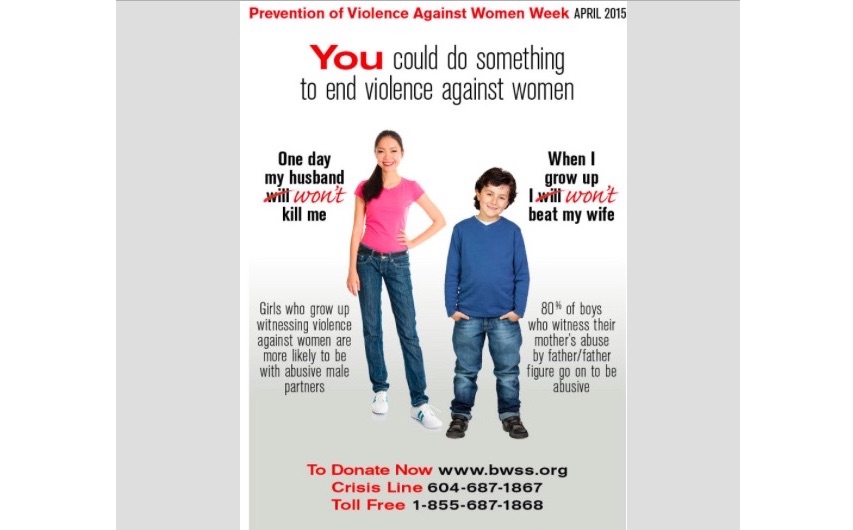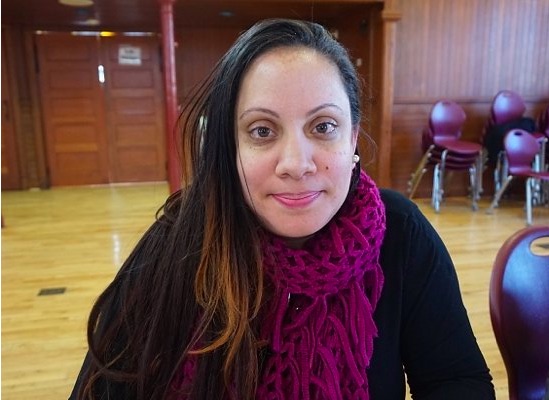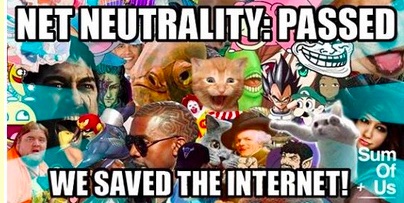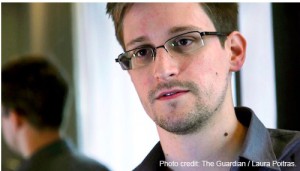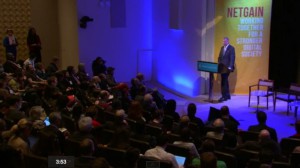DISARMAMENT & SECURITY .
an article by Kim Stoner, Board of Directors, Promoting Enduring Peace
It was exciting for Promoting Enduring Peace to work with a broad coalition of environmental organizations in support of the Peoples’ Climate Mobilization last September in New York City. Now, we would like for environmental groups to join us in mobilizing a broad coalition in support of nuclear disarmament this April – again in New York City.

click on photo to enlarge
Specifically, we invite you to participate in the Peace and Planet International Conference for a Nuclear-Free, Peaceful, Just, and Sustainable World on April 24 and 25, and the following Rally and March on April 26. When representatives of the nations of the world gather at the United Nations for the 5-year Review of the Nuclear Non- Proliferation Treaty, we want to deliver the message to these representatives that the peoples of the world want good faith negotiations to eliminate nuclear weapons, as required by the Treaty since it entered into force in 1970. For the specific demands of the organizers, please go to the website www.PeaceandPla net.org.
Despite the end of the Cold War, and President Obama’s pledge in 2009 to seek a “nuclear-free world,” there are about 17,000 nuclear weapons in existence worldwide, including over 7,000 in the US and 8,000 in Russia. According to a recent federal report on modernization of the US nuclear arsenal, over $1 trillion will be spent to upgrade US nuclear weapons over the next 30 years. So, rather than eliminating our nuclear weapons, we will be “modernizing” them.
Proliferation of nuclear weapons also increases the likelihood of their use in regional conflicts, such as between India and Pakistan. This would, of course, result in tremendous human mortality and suffering and regional environmental effects from the blasts, the pressure waves, direct radiation and radioactive fallout. In addition, even a relatively small regional nuclear war (using 50 weapons on each side) would have devastating global environmental effects by sending vast amounts of smoke and soot into the atmosphere resulting in a nuclear winter lasting for a decade or more.
The continuing threat of nuclear weapons has, for many of us, been present our entire lives. As a result, it requires a big psychological step for us to realize that the nuclear war culture, like the reliance on fossil fuels, is an aspect of our civilization that can and must change.
Can we abolish all nuclear weapons?
30 August 2012 — The following opinion piece by Secretary-General BAN Ki-moon appeared in leading newspapers in Argentina, Bangladesh, Burundi, China, Germany, India, Iran, Italy, Japan, Lebanon, Malaysia, The Philippines, Republic of Korea, Russia, Serbia, Turkey, Ukraine and European weekly publications and has been translated into 10 languages.
‘THE WORLD IS OVER-ARMED AND PEACE IS UNDER-FUNDED’
Last month, competing interests prevented agreement on a much-needed treaty that would have reduced the appalling human cost of the poorly regulated international arms trade. Meanwhile, nuclear disarmament efforts remain stalled, despite strong and growing global popular sentiment in support of this cause.
The failure of these negotiations and this month’s anniversaries of the atomic bombings at Hiroshima and Nagasaki provide a good opportunity to explore what has gone wrong, why disarmament and arms control have proven so difficult to achieve, and how the world community can get back on track towards these vitally important goals.
Many defence establishments now recognize that security means far more than protecting borders. Grave security concerns can arise as a result of demographic trends, chronic poverty, economic inequality, environmental degradation, pandemic diseases, organized crime, repressive governance and other developments no state can control alone. Arms can’t address such concerns.
Yet there has been a troubling lag between recognizing these new security challenges, and launching new policies to address them. National budget priorities still tend to reflect the old paradigms. Massive military spending and new investments in modernizing nuclear weapons have left the world over-armed — and peace under-funded.
Last year, global military spending reportedly exceeded $1.7 trillion – more than $4.6 billion a day, which alone is almost twice the UN’s budget for an entire year. This largesse includes billions more for modernizing nuclear arsenals decades into the future.
This level of military spending is hard to explain in a post-Cold War world and amidst a global financial crisis. Economists would call this an “opportunity cost”. I call it human opportunities lost. Nuclear weapons budgets are especially ripe for deep cuts.
Such weapons are useless against today’s threats to international peace and security. Their very existence is de-stabilizing: the more they are touted as indispensable, the greater is the incentive for their proliferation. Additional risks arise from accidents and the health and environmental effects of maintaining and developing such weapons.
The time has come to re-affirm commitments to nuclear disarmament, and to ensure that this common end is reflected in national budgets, plans and institutions.
Four years ago, I outlined a five-point disarmament proposal highlighting the need for a nuclear weapon convention or a framework of instruments to achieve this goal.
Yet the disarmament stalemate continues. The solution clearly lies in greater efforts by States to harmonize their actions to achieve common ends. Here are some specific actions that all States and civil society should pursue to break this impasse.
* Support efforts by the Russian Federation and the United States to negotiate deep, verified cuts in their nuclear arsenals, both deployed and un-deployed.
* Obtain commitments by others possessing such weapons to join the disarmament process.
* Establish a moratorium on developing or producing nuclear weapons or new delivery systems.
* Negotiate a multilateral treaty outlawing fissile materials that can be used in nuclear weapons.
* End nuclear explosions and bring into force the Comprehensive Nuclear-Test-Ban Treaty.
* Stop deploying nuclear weapons on foreign soil, and retire such weapons.
* Ensure that nuclear-weapon states report to a public UN repository on nuclear disarmament, including details on arsenal size, fissile material, delivery systems, and progress in achieving disarmament goals.
* Establish a Middle East zone free of nuclear weapons and other weapons of mass destruction.
* Secure universal membership in treaties outlawing chemical and biological weapons.
* Pursue parallel efforts on conventional arms control, including an arms trade treaty, strengthened controls over the illicit trade in small arms and light weapons, universal membership in the Mine Ban, Cluster Munitions, and Inhumane
Weapons Conventions, and expanded participation in the UN Report on Military Expenditures and the UN Register of Conventional Arms.
* Undertake diplomatic and military initiatives to maintain international peace and security in a world without nuclear weapons, including new efforts to resolve regional disputes.
